 Image 1 of 13
Image 1 of 13

 Image 2 of 13
Image 2 of 13

 Image 3 of 13
Image 3 of 13

 Image 4 of 13
Image 4 of 13

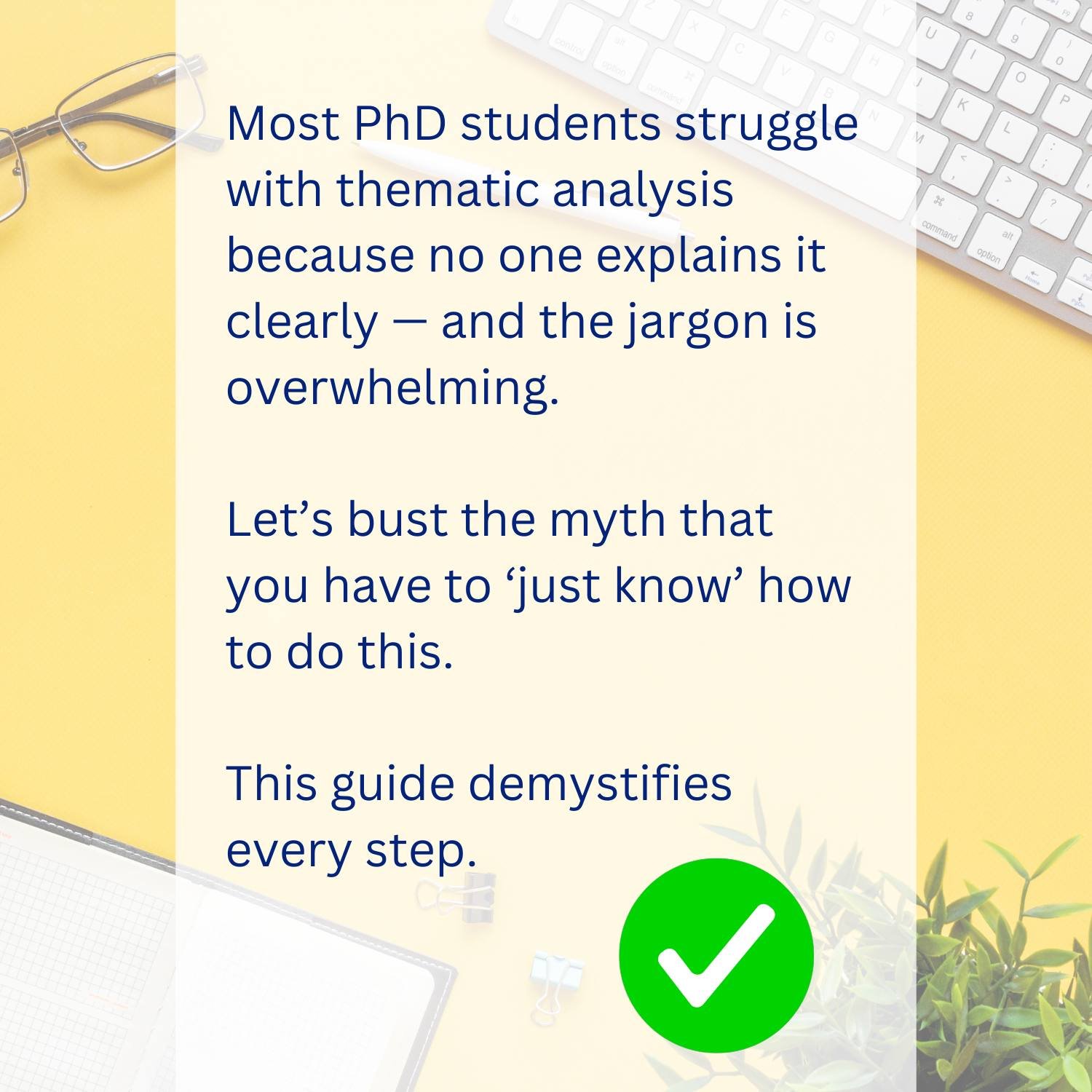 Image 5 of 13
Image 5 of 13

 Image 6 of 13
Image 6 of 13

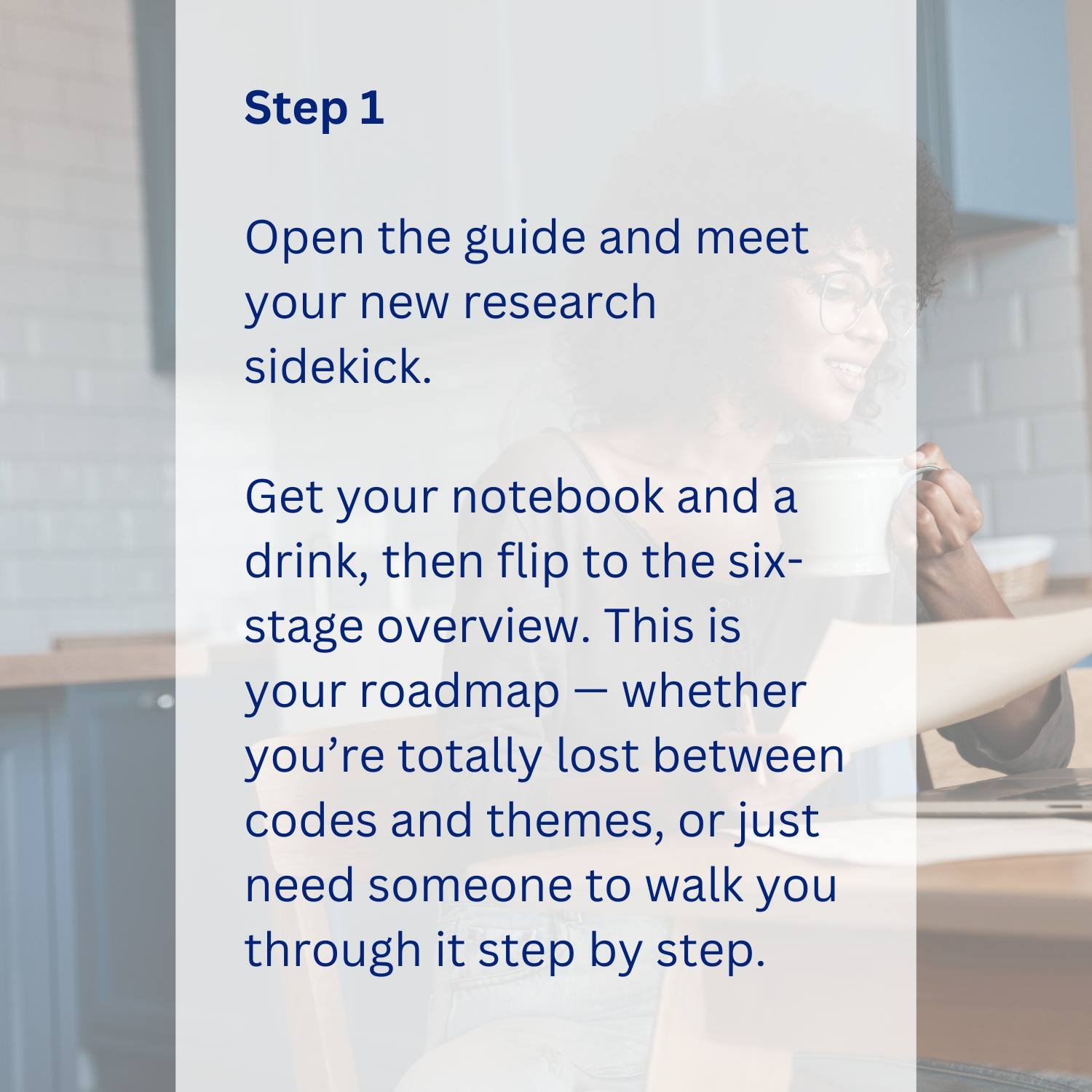 Image 7 of 13
Image 7 of 13

 Image 8 of 13
Image 8 of 13

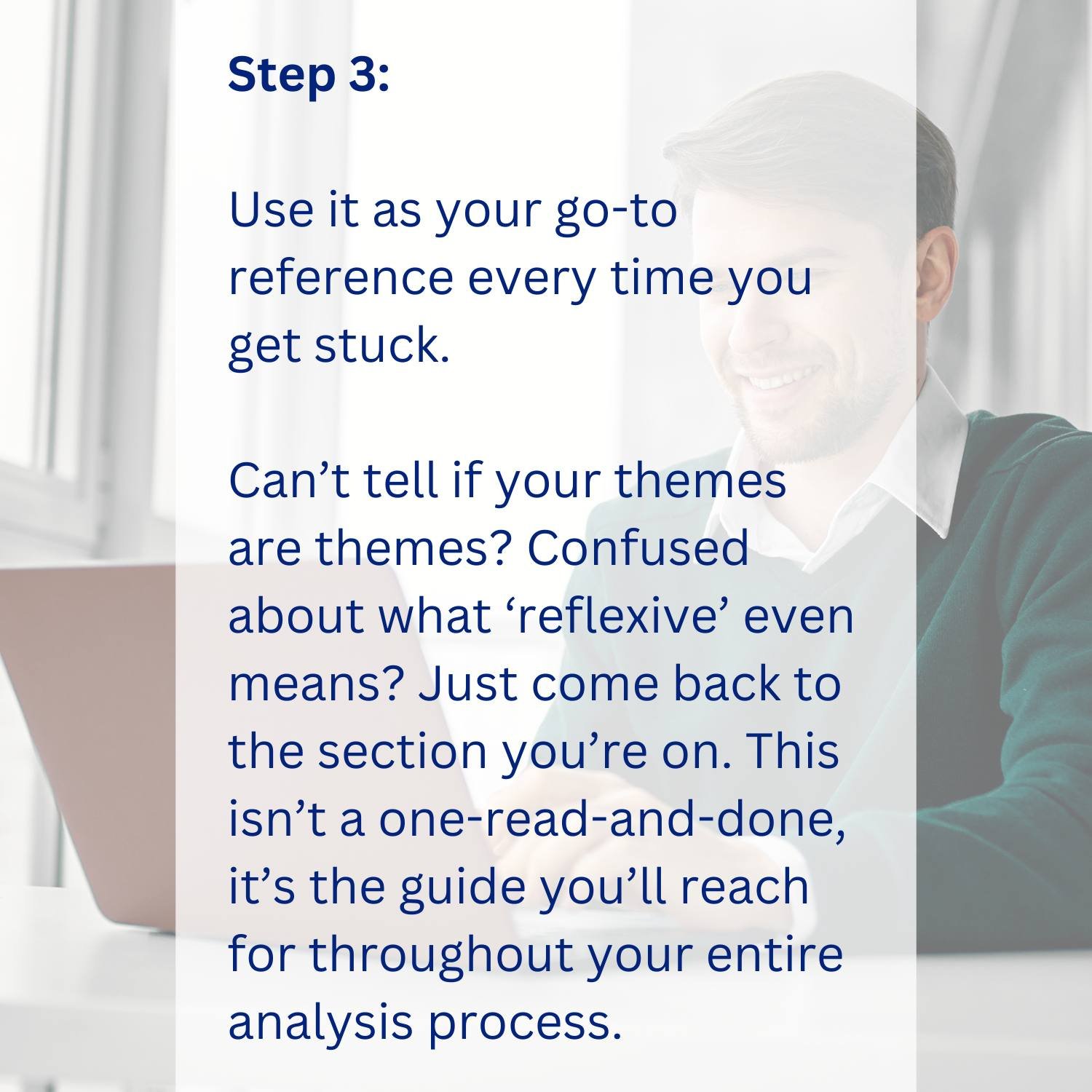 Image 9 of 13
Image 9 of 13

 Image 10 of 13
Image 10 of 13

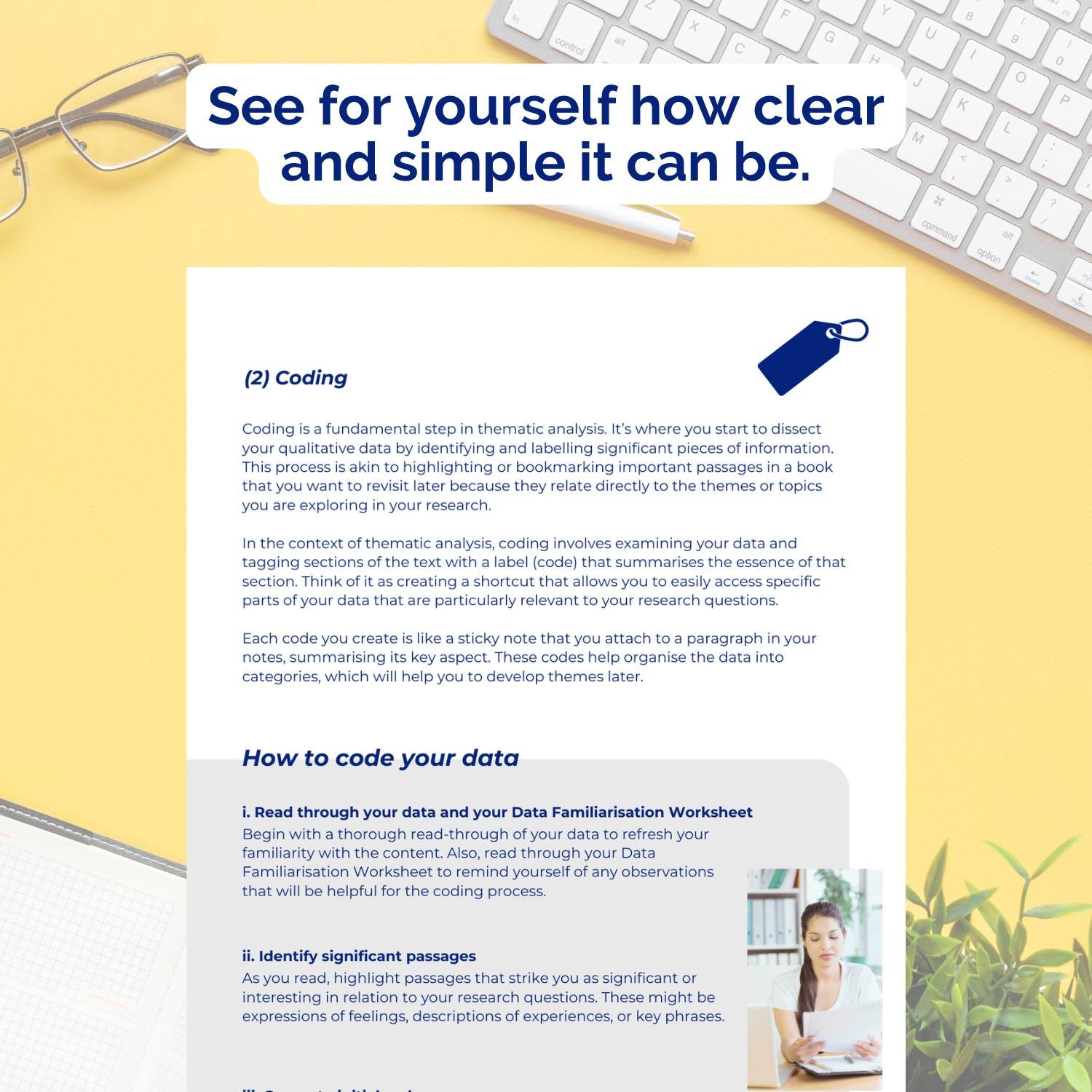 Image 11 of 13
Image 11 of 13

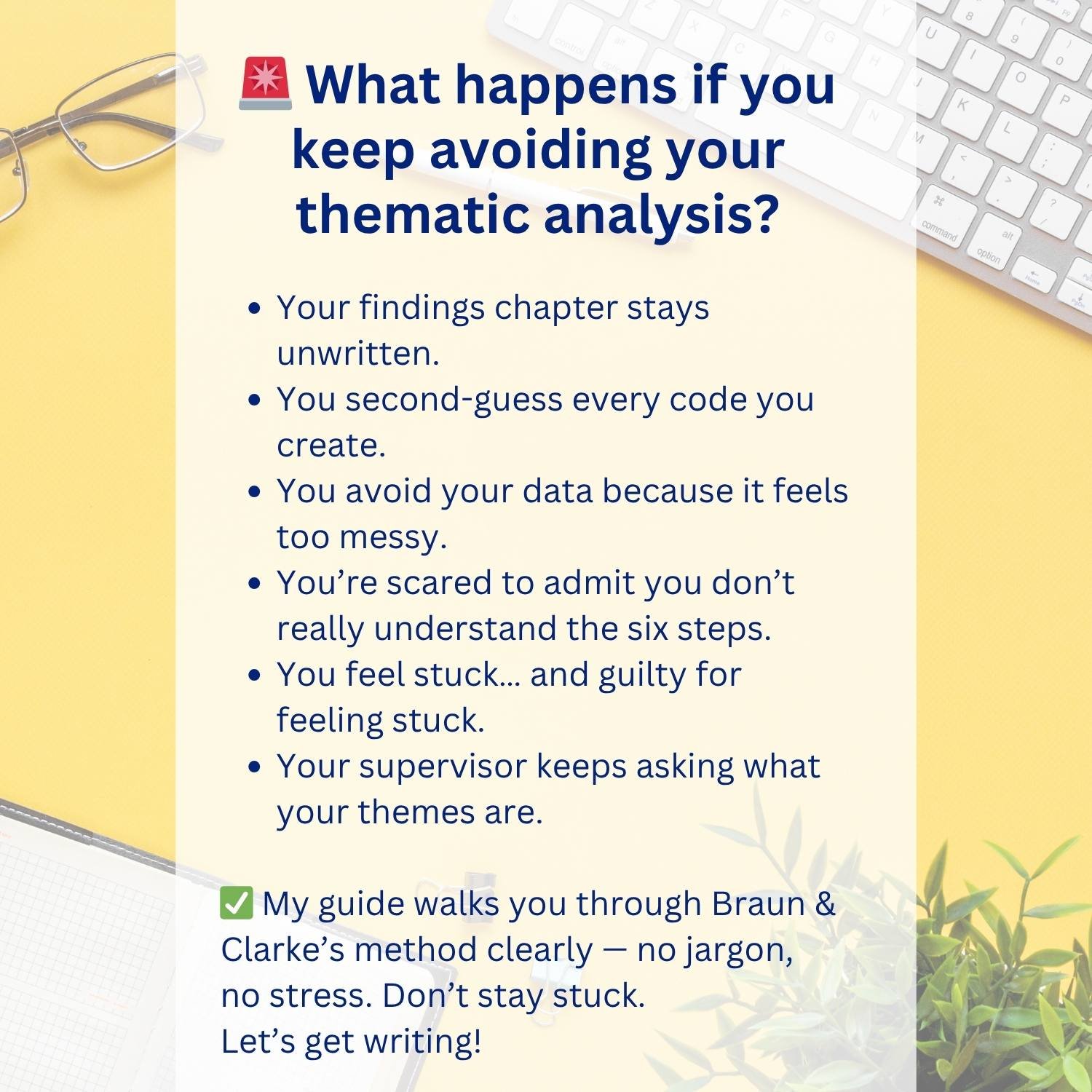 Image 12 of 13
Image 12 of 13

 Image 13 of 13
Image 13 of 13

Braun & Clarke’s Reflexive Thematic Analysis – Simplified Steps & Worksheets
Lost in Braun & Clarke’s thematic analysis? You’re not the only one — but you don’t have to stay stuck.
Not sure how to code your data?
Worried your themes are too vague (or too forced)?
Reading academic articles but still thinking, “I don’t get it.”
You’re not alone. Reflexive thematic analysis is one of the most widely used methods in qualitative PhD research — but it’s also one of the most misunderstood.
This guide simplifies Braun & Clarke’s six-step process into clear, manageable stages — with practical examples and worksheets to help you stop second-guessing and start analysing.
What this guide helps you do:
✅ Understand the six stages of reflexive thematic analysis
✅ Code and categorise your data with confidence
✅ Develop strong, meaningful themes — without forcing them
✅ Move from description to analysis and interpretation
✅ Feel proud of your findings chapter
What’s included?
A 43-page step-by-step guide to thematic analysis
6 printable worksheets to help you code, develop themes, and interpret your data
Examples that walk you through the process
Clear explanations — no jargon, no fluff, no unnecessary theory
Guidance designed especially for social science, education, health, and humanities researchers
Why this guide works:
It’s practical – Each stage is broken down into actions you can actually do
It saves time – No more decoding 200-page textbooks
It speaks your language – Written to support real PhD students, not theory-heads
It builds confidence – You’ll stop second-guessing and start progressing
It empowers you – You’re not just following a process. You’re becoming the kind of researcher who knows exactly what to do next, and why it matters.
🚨 You’ve collected all that data — don’t let it go to waste
You’ve already done the hard part — collecting your data.
But if your analysis stalls here, the entire thesis could unravel.
Lost time. Missed deadlines. Weeks of worry.
This guide helps you stop spinning and start writing — before your findings chapter becomes the thing that holds everything up.
💡 Imagine this…
Sending your draft to your supervisor without the usual panic spiral.
Actually feeling proud of the analysis you’ve written — because you finally understand how it fits together.
Finishing your PhD knowing you figured this out.
That’s where this guide takes you.
How to use it:
Grab a cup of tea or coffee and open the guide
Choose the stage you’re most stuck on right now
Follow the steps and fill in the worksheets as you go
Use it as your go-to reference every time you get stuck
Not sure if this guide is right for you?
Why not try my FREE Braun and Clarke Starter Kit?
Get a taste of my step-by-step guidance — and start making progress on your analysis.
Download your starter kit here and see if it’s your jam!
⚠️ Please note:
This is a digital product (PDF). No physical items will be shipped
These tools support — but don’t replace — your supervisor’s advice
By purchasing, you agree to our Terms & Conditions
💬 Got questions before you buy?
Contact me here — I’d love to help you figure out where to start.
Price is listed in GBP because we are a UK-based business but you can still buy if you are outside of the UK - your bank will convert the amount into your local currency at the current exchange rate.
Lost in Braun & Clarke’s thematic analysis? You’re not the only one — but you don’t have to stay stuck.
Not sure how to code your data?
Worried your themes are too vague (or too forced)?
Reading academic articles but still thinking, “I don’t get it.”
You’re not alone. Reflexive thematic analysis is one of the most widely used methods in qualitative PhD research — but it’s also one of the most misunderstood.
This guide simplifies Braun & Clarke’s six-step process into clear, manageable stages — with practical examples and worksheets to help you stop second-guessing and start analysing.
What this guide helps you do:
✅ Understand the six stages of reflexive thematic analysis
✅ Code and categorise your data with confidence
✅ Develop strong, meaningful themes — without forcing them
✅ Move from description to analysis and interpretation
✅ Feel proud of your findings chapter
What’s included?
A 43-page step-by-step guide to thematic analysis
6 printable worksheets to help you code, develop themes, and interpret your data
Examples that walk you through the process
Clear explanations — no jargon, no fluff, no unnecessary theory
Guidance designed especially for social science, education, health, and humanities researchers
Why this guide works:
It’s practical – Each stage is broken down into actions you can actually do
It saves time – No more decoding 200-page textbooks
It speaks your language – Written to support real PhD students, not theory-heads
It builds confidence – You’ll stop second-guessing and start progressing
It empowers you – You’re not just following a process. You’re becoming the kind of researcher who knows exactly what to do next, and why it matters.
🚨 You’ve collected all that data — don’t let it go to waste
You’ve already done the hard part — collecting your data.
But if your analysis stalls here, the entire thesis could unravel.
Lost time. Missed deadlines. Weeks of worry.
This guide helps you stop spinning and start writing — before your findings chapter becomes the thing that holds everything up.
💡 Imagine this…
Sending your draft to your supervisor without the usual panic spiral.
Actually feeling proud of the analysis you’ve written — because you finally understand how it fits together.
Finishing your PhD knowing you figured this out.
That’s where this guide takes you.
How to use it:
Grab a cup of tea or coffee and open the guide
Choose the stage you’re most stuck on right now
Follow the steps and fill in the worksheets as you go
Use it as your go-to reference every time you get stuck
Not sure if this guide is right for you?
Why not try my FREE Braun and Clarke Starter Kit?
Get a taste of my step-by-step guidance — and start making progress on your analysis.
Download your starter kit here and see if it’s your jam!
⚠️ Please note:
This is a digital product (PDF). No physical items will be shipped
These tools support — but don’t replace — your supervisor’s advice
By purchasing, you agree to our Terms & Conditions
💬 Got questions before you buy?
Contact me here — I’d love to help you figure out where to start.
Price is listed in GBP because we are a UK-based business but you can still buy if you are outside of the UK - your bank will convert the amount into your local currency at the current exchange rate.